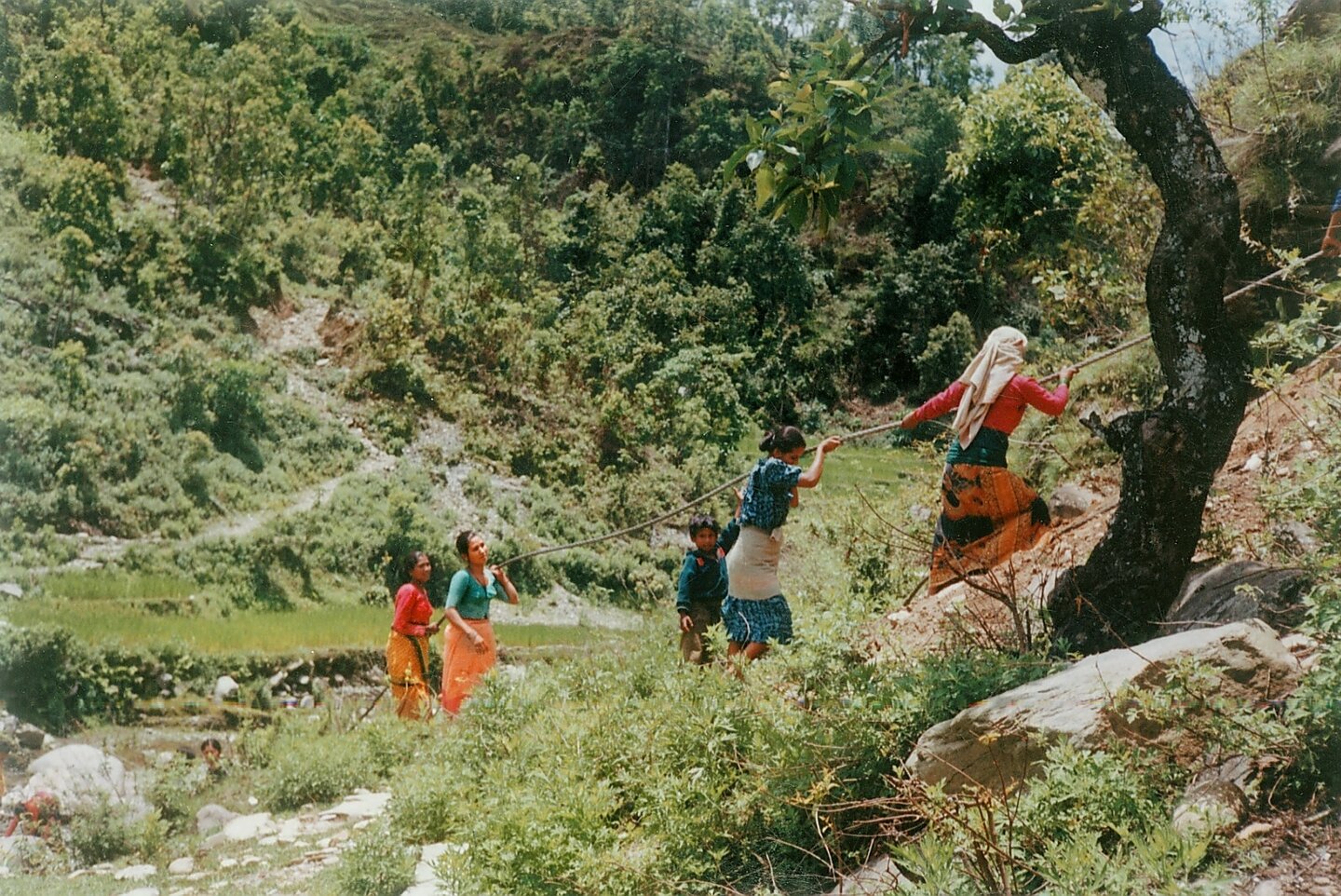This month Nepal celebrated an extraordinary milestone: the inauguration of its 10,000th trail bridge. These bridges have transformed rural access in a country with difficult terrain, where thousands of rivers swell during the rainy season and create treacherous crossings. But the impact of these bridges goes far beyond Nepal. The bridge building program, which was funded by the Swiss Agency for Development and Cooperation (SDC) from 1964-2023, with technical assistance provided by Helvetas, offers a model of scalable, locally led development that has been replicated in numerous other countries – and which holds great potential to keep expanding South-South cooperation.
We spoke with Gyanendra Rajbhandari, a Nepali engineer who has worked with Helvetas’ Trail Bridge Support Unit since 1990 and now leads the technical oversight of the national trail bridge program, about the factors that contributed to this localization success story.
Ownership was clear from the start
“There was never a question of ownership,” said Rajbhandari. “Even from the beginning, back in the 1960s, the lead role for the trail bridge program was always with the government. SDC and Helvetas’ roles were financial and technical support.”
This clarity originates from Nepal’s National Trail Bridge Strategy. “The strategy gives clear guidance on roles and responsibilities for all stakeholders, including government institutions and the private sector,” said Rajbhandari. The emphasis on creating guiding documents for bridge building practices and standards has continued through the decades. Today, 16 manuals are in circulation, sharing guidance for bridge practitioners on technical norms and standards, designs, and implementation modalities that incorporate gender equality and social inclusion practices.
The communities’ role is also clear from the outset, and participatory and transparent processes guide the build. “Communities are involved from the initial planning process all the way through implementation,” said Rajbhandari. “The request for a bridge comes directly from communities to their local municipality. Then there are public hearings among communities around site selection – the users choose where they want to build the bridge. They also create a User’s Committee. After construction is completed, there is a public audit, where technical, social and financial issues are discussed.”
Once a community has selected their preferred site, it’s time for the Trail Bridge Support Unit to perform their role. “We determine where the bridge can be placed from the technical point of view – to ensure the bridge can be long-lasting,” said Rajbhandari. “We then present the community with bridge placement options that are geologically sound and as near the original crossing point as possible, and they make the final site decision.”

Women’s participation was prioritized
Providing leadership and employment opportunities for women is a priority of the trail bridge program. “This starts with the formation of the User’s Committee,” said Rajbhandari. “Fifty percent of representatives should be women. And a key position – either Chairperson, Secretary or Treasurer – is allocated for a woman. This program also provides leadership training for women in the User’s Committee. Some committees exist entirely of women. We find that an all-female User’s Committee is more effective than men.”
“We also include women in employment,” continued Rajbhandari. “Previously, people were skeptical about women taking part in bridge construction due to the physically demanding nature of the construction process. But we've seen that when opportunities were provided, women have taken them up. Now at least 35% of people involved in the bridge construction are women.”
Helvetas encourages the program’s many stakeholders to provide women with equal pay for equal work. Traineeships and on-the-job training have also been set up to help women access more skilled roles, such as sub-engineers and engineers. “This year alone, 20 women engineers and 37 women sub-engineers successfully completed a 9-month traineeship focused on trail bridge construction,” said Rajbhandari. “Most will integrate into the sector through positions in government, NGOs and private consulting firms.”

Sharing learnings across borders
The Trail Bridge Support Unit will close its operation this month, but that won’t be the end of Rajbhandari and his fellow Nepali engineers’ work in the trail bridge sector. Many countries have expressed interested in tapping into Helvetas Nepal’s decades of experience and bridge-building expertise. This engagement happens through the South-South Cooperation Unit, which works with governments, NGOs and the private sector to establish and develop their trail bridge programs.
Rajbhandari has already participated extensively in this knowledge-sharing initiative. “I have traveled to Bhutan, Indonesia, Ethiopia, Burundi, Laos, Vietnam, Honduras and Guatemala,” he said. “I was involved in feasibility studies, program development, mapping, design, implementation and quality insurance. My goal with each visit was to use my learnings from Nepal to develop local capacity.”
“My next chapter will be continuing this work and strengthening the South-South Cooperation Unit,” said Rajbhandari. “I am confident that in Nepal the institutions and practitioners are in place to take the sector forward and continue to deliver safer river crossings.”
Additional reading:
- Swiss Legacy in Trail Bridge Building in Nepal and Beyond
- How Trail Bridges Impact Women’s Lives
- UNESCAP Bulletin: “Mainstreaming Gender in the Trail Bridge Sub-Sector in Nepal: Tracing the Development of Policy Changes”


